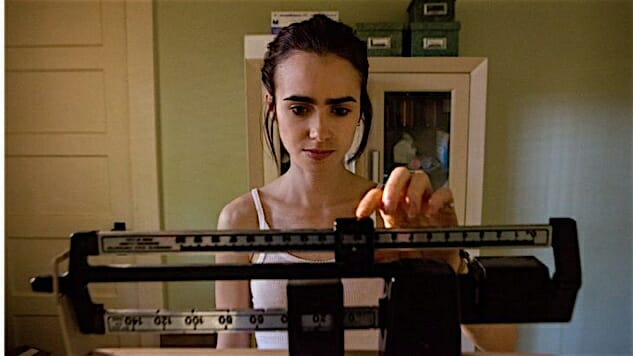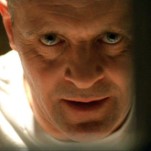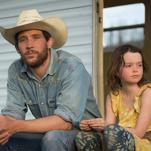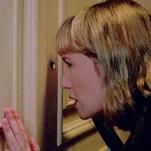To the Bone Understands a Crucial Fact about Eating Disorders

Eating disorders are not one-size-fits-all. They affect people of all ages, races, gender and sexual preference. Often, this fact is overlooked in the media and entertainment industries. Netflix’s new original film To The Bone may at first seem to be perpetuating that myth—it stars Lily Collins as Ellen, after all—but in her supporting cast of characters, writer Marti Noxon reveals a bit more of the reality other depictions so often overlook.
When Collins’ Ellen, who struggles with anorexia nervosa, enters the unconventional treatment center run by Dr. Beckham (Keanu Reeves), she shares a house with Megan (Leslie Bibb), a pregnant woman most likely in her late 30s (Bibb is 43); Luke (Alex Sharp), a young male dancer; Kendra, an African-American lesbian; and three young, white women who are in their late teens to early 20s. This treatment facility is not unique.
“It really runs across the gamut, and we encounter people from all walks of life that are struggling in some shape or form,” explains Lauren Smolar, director of helpline services at the National Eating Disorders Association. “It can be from the very young to the very old—people can struggle into their 80s and 90s. It affects women, men, people who are transgendered or have gender identity issues, the LGBTQ community, and every nationality.”
Megan is part of a growing demographic of women who struggle with an eating disorder later in life. While her age is not specifically mentioned in the movie, her appearance and maturity makes it apparent that she is older than her housemates.
Kerry Neville, a writer and professor at Georgia College and State University, first entered treatment for anorexia nervosa at 38 years old, and went into remission after treatment at the age of 40. Neville was surprised to see other women her age or older, along with men, people of color and more. This provided motivation and encouragement that she was not alone.
“This is a disease that will hold on, regardless of age,” Neville explains. “It was one of the things that really impacted me. My last treatment was in a hospital setting and there was a woman who was 65 or 66. It was pretty clear that she was going to die from this disease, and I decided that I didn’t want to potentially be a grandmother and die from this.”
Another growing trend among eating disorders is men. The character of Luke, a dancer with an injured knee, represents another demographic that the media seldom associates with eating disorders. We meet him six months into his stay at the treatment center, and when Ellen asks how he does it, how he eats, he explains that he has worked to overcome his fear of becoming obese. Plus, he says, “I’m not going to lie. I’m really fuckin’ hungry. Like two years worth of hungry.”
-

-

-

-

-

-

-

-

-

-

-

-

-

-

-

-

-

-

-

-

-

-

-

-

-

-

-

-

-

-

-

-

-

-

-

-

-

-

-

-








































